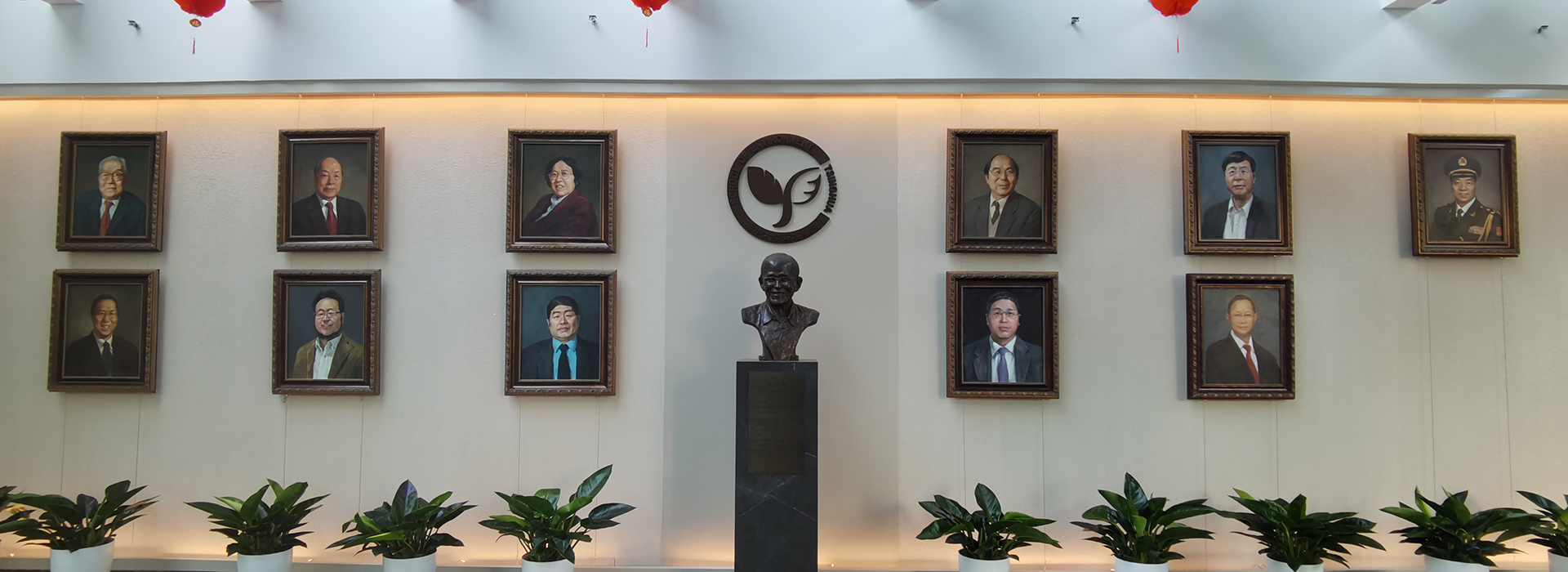Selected SCI-Publications (first / corresponding author)
Emission Inventory and Control Effectiveness
1.Xing, J., Ding, D., Wang, S., Dong, Z., Kelly, J. T., Jang, C., ... & Hao, J. Development and application of observable response indicators for design of an effective ozone and fine-particle pollution control strategy in China. Atmospheric Chemistry & Physics, 19(21), 2019.
2.Ding, D.,Xing, J., Wang, S., Chang, X., & Hao, J. Impacts of emissions and meteorological changes on China’s ozone pollution in the warm seasons of 2013 and 2017. Frontiers of Environmental Science & Engineering, 13(5), 76, 2019.
3.Liu, Y.,Xing, J.,Wang, S., Fu, X., & Zheng, H. Source-specific speciation profiles of PM2. 5 for heavy metals and their anthropogenic emissions in China. Environmental pollution, 239, 544-553, 2018.
4.Xing, J., Ding, D., Wang, S., Zhao, B., Jang, C., Wu, W., ... & Hao, J. Quantification of the enhanced effectiveness of NO x control from simultaneous reductions of VOC and NH 3 for reducing air pollution in the Beijing–Tianjin–Hebei region, China. Atmospheric Chemistry and Physics, 18(11), 7799-7814, 2018.
5.Fu, X., Wang, S.,Xing, J., Zhang, X., Wang, T., & Hao, J. Increasing ammonia concentrations reduce the effectiveness of particle pollution control achieved via SO2 and NO X emissions reduction in east China. Environmental Science & Technology Letters, 4(6), 221-227, 2017.
6.Xing, J., Pleim, J., Mathur, R., Pouliot, G., Hogrefe, C., Gan, C.-M., and Wei, C.: Historical gaseous and primary aerosol emissions in the United States from 1990 to 2010, Atmos. Chem. Phys., 13, 7531-7549, doi:10.5194/acp-13-7531-2013, 2013.
7.Xing, J., Wang, S. X., Chatani, S., Zhang, C. Y., Wei, W., Hao, J. M., Klimont, Z., Cofala, J., and Amann, M.: Projections of air pollutant emissions and its impacts on regional air quality in China in 2020, Atmos. Chem. Phys., 11, 3119-3136, doi:10.5194/acp-11-3119-2011, 2011.
8.Xing, J., Zhang, Y., Wang, S., Liu, X., Cheng, S., Zhang, Q., Chen, Y.S., Streets, D., Jang, C., Hao, J. and Wang, W. Modeling study on the air quality impacts from emission reductions and atypical meteorological conditions during the 2008 Beijing Olympics. Atmospheric Environment, 45(10), 1786-1798, 2011.
Integrated Assessment Model
9.Xing, J., Zheng, S., Ding, D., James, K., Wang, S., Li, S., ... & Hao, J. Deep learning for prediction of the air quality response to emission changes, Environmental Science & Technology, 2020
10.Lu, X., Zhang, S.,Xing, J., Wang, Y., Chen, W., Ding, D.,… & Hao, J. Progress of Air Pollution Control in China and its Challenges and Opportunities in the Ecological Civilization Era, Engineering, 2020
11.Zhang, F.,Xing, J., Zhou, Y., Wang, S., Zhao, B., Zheng, H., ... & Hao, J. Estimation of abatement potentials and costs of air pollution emissions in China. Journal of Environmental Management, 260, 110069, 2020.
12.Liu, S.,Xing, J., Wang, S., Ding, D., Chen, L., & Hao, J. Revealing the impacts of transboundary pollution on PM2. 5-related deaths in China. Environment international, 134, 105323, 2020.
13.Xing, J., Zhang, F., Zhou, Y., Wang, S., Ding, D., Jang, C., ... & Hao, J. Least-cost control strategy optimization for air quality attainment of Beijing–Tianjin–Hebei region in China. Journal of Environmental Management, 245, 95-104, 2019.
14.Chang, X., Wang, S., Zhao, B.,Xing, J., Liu, X., Wei, L., ... & Ding, D. Contributions of inter-city and regional transport to PM2. 5 concentrations in the Beijing-Tianjin-Hebei region and its implications on regional joint air pollution control. Science of The Total Environment, 660, 1191-1200, 2019.
15.Ding, D.,Xing, J., Wang, S., Liu, K., & Hao, J. Estimated contributions of emissions controls, meteorological factors, population growth, and changes in baseline mortality to reductions in ambient PM 2.5 and PM 2.5-related mortality in China, 2013–2017. Environmental Health Perspectives, 127(6), 067009, 2019.
16.Xing, J.,Wang, S., Zhao, B., Wu, W., Ding, D., Jang, C., ... & Hao, J. Quantifying nonlinear multiregional contributions to ozone and fine particles using an updated response surface modeling technique. Environmental Science & Technology, 51(20), 11788-11798, 2017.
17.Wang, J.,Xing, J., Mathur, R., Pleim, J., Wang, S., Hogrefe, C., Gan, C., Wong, C.D. and Hao, J. Historical Trends in PM 2.5-Related Premature Mortality during 1990-2010 across the Northern Hemisphere. Environ. Health Perspect, DOI:10.1289/EHP298, 2017.
18.Xing, J., Wang, S. X., Jang, C., Zhu, Y., and Hao, J. M.: Nonlinear response of ozone to precursor emission changes in China: a modeling study using response surface methodology, Atmos. Chem. Phys., 11, 5027-5044, doi:10.5194/acp-11-5027-2011, 2011.
Atmospheric Chemistry and Dynamics
19.Chen, L.,Xing, J., Mathur, R., Liu, S., Wang, S., & Hao, J. Quantification of the enhancement of PM2. 5 concentration by the downward transport of ozone from the stratosphere. Chemosphere, 126907, 2020.
20.Tao, H.,Xing, J., Zhou, H., Pleim, J., Ran, L., Chang, X., ... & Li, J. Impacts of improved modeling resolution on the simulation of meteorology, air quality, and human exposure to PM2. 5, O3 in Beijing, China. Journal of Cleaner Production, 243, 118574, 2020.
21.Zhang, S.,Xing, J., Sarwar, G., Ge, Y., He, H., Duan, F., ... & Chu, B. Parameterization of heterogeneous reaction of SO2 to sulfate on dust with coexistence of NH3 and NO2 under different humidity conditions. Atmospheric environment, 208, 133-140, 2019.
22.Tao, H.,Xing, J., Zhou, H., Chang, X., Li, G., Chen, L., & Li, J. Impacts of land use and land cover change on regional meteorology and air quality over the Beijing-Tianjin-Hebei region, China. Atmospheric environment, 189, 9-21, 2018.
23.Xing, J.,Mathur, R., Pleim, J., Hogrefe, C., Wang, J., Gan, C.-M., Sarwar, G., Wong, D. C., and McKeen, S.: Representing the effects of stratosphere–troposphere exchange on 3-D O3 distributions in chemistry transport models using a potential vorticity-based parameterization, Atmos. Chem. Phys., 16, 10865-10877, doi:10.5194/acp-16-10865-2016, 2016.
24.Xing, J.,Mathur, R., Pleim, J., Hogrefe, C., Gan, C.-M., Wong, D. C., Wei, C., Gilliam, R., and Pouliot, G.: Observations and modeling of air quality trends over 1990–2010 across the Northern Hemisphere: China, the United States and Europe, Atmos. Chem. Phys., 15, 2723-2747, doi:10.5194/acp-15-2723-2015, 2015.
Air Pollution and Climate Interaction
25.Sahu, S. K., Chen, L., Liu, S., Ding, D., &Xing, J.The impact of aerosol direct radiative effects on PM2. 5-related health risk in Northern Hemisphere during 2013–2017. Chemosphere, 126832, 2020.
26.Liu, S.,Xing, J.,Zhang, H., Ding, D., Zhang, F., Zhao, B., ... & Wang, S. Climate-driven trends of biogenic volatile organic compound emissions and their impacts on summertime ozone and secondary organic aerosol in China in the 2050s. Atmospheric Environment, 218, 117020, 2019.
27.Liu, S.,Xing, J., Zhao, B., Wang, J., Wang, S., Zhang, X., & Ding, A. Understanding of aerosol–climate interactions in China: aerosol impacts on solar radiation, temperature, cloud, and precipitation and its changes under future climate and emission scenarios. Current pollution reports, 5(2), 36-51, 2019.
28.Xing, J., Wang, J., Mathur, R., Wang, S., Sarwar, G., Pleim, J., ... & Hao, J. Impacts of aerosol direct effects on tropospheric ozone through changes in atmospheric dynamics and photolysis rates. Atmospheric chemistry and physics, 17(16), 9869, 2017.
29.Xing, J., Wang, J., Mathur, R., Pleim, J., Wang, S., Hogrefe, C., Gan, C.M., Wong, D.C. and Hao, J., Unexpected benefits of reducing aerosol cooling effects. Environmental Science & Technology, 50(14), pp.7527-7534, 2016.
30.Xing, J., Mathur, R., Pleim, J., Hogrefe, C., Gan, C.-M., Wong, D. C., Wei, C. and Wang, J.: Air pollution and climate response to aerosol direct radiative effects: A modeling study of decadal trends across the northern hemisphere, J. Geophys. Res. Atmos., 120, 12,221–12,236, doi:10.1002/2015JD023933, 2015.
31.Xing, J., Mathur, R., Pleim, J., Hogrefe, C., Gan, C. M., Wong, D. C., & Wei, C. Can a coupled meteorology-chemistry model reproduce the historical trend in aerosol direct radiative effects over the Northern Hemisphere?. Atmospheric Chemistry & Physics, 15(17), 2015.





